Festivals in Valencia, Spain
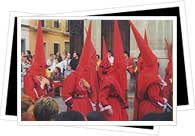 Held together by the common Valencian passions for lively partying, colorful parades and glass-rattling pyrotechnics, Valencia's festivals go above and beyond the typical definition of "celebration." From the solemn processions of Semana Santa to the tomato-hurling La Tomatina, the blazing towers of Las Fallas and even a festival dedicated solely to fireworks displays, a Valencian festival is without a doubt an experience like no other.
Held together by the common Valencian passions for lively partying, colorful parades and glass-rattling pyrotechnics, Valencia's festivals go above and beyond the typical definition of "celebration." From the solemn processions of Semana Santa to the tomato-hurling La Tomatina, the blazing towers of Las Fallas and even a festival dedicated solely to fireworks displays, a Valencian festival is without a doubt an experience like no other.
Filling in any gaps as well as coinciding with Valencia's major festivals are all sorts of music, theater, dance, and general arts festivals- check out our arts festivals page to see what's going on during your stay! Plus, don't forget to click on the links below to find out more about Valencia's most famous festivals!
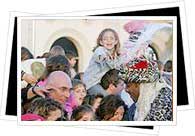 Cabalgata de los Reyes Magos / Epifanía
Cabalgata de los Reyes Magos / Epifanía
(Parade of the Three Kings / Epiphany)
When: January 5-6
Festival Description: Without a doubt the most anticipated day of the year for Spanish children, the arrival of the three gift-bearing Biblical kings- Melchor, Gaspar and Baltasar- is celebrated with a festive early evening parade. The religious monarchs parade through the decorated city- along with their enormous entourage of 33 lavishly adorned floats and 1,000 costumed people!- throwing 10,000 kilograms of candies to the rather excited children lining the sidewalks. Following the parade, which lasts hours and hits up practically the entire city, the kings greet the public from the balcony of the Ayuntamiento.
Following the excitement - and probably the sugar highs - of the Cabalgata, families leave out drinks and sweets to entice the three kings before turning in early for bed. The next morning, children awaken delighted to find that the kings did, in fact, stop by and - aside from eating the sweets and sipping on the drinks - leave behind hoards of gifts just waiting to be opened.
San Vicente Mártir
(Feast Day of Saint Vicente the Martyr)
When: January 22
Festival Description: Valencia celebrates their patron saint Vicente Mártir, a young deacon martyred by order of Roman emperor Diocleciano in 303 A.D., through a variety of ceremonial events including processions and a Papal mass.
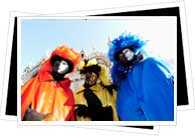 Carnaval
Carnaval
Carnival
When: February
Festival Description: Not nearly as extravagant as the wild carnavales in cities like Cádiz and Tenerife, Valencia's own carnaval is still a blast in its own right. Taking place just before the onset of Lent, Valencia's atmosphere is lively and festive with drinking, dancing, music and street parties.
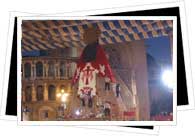 Las Fallas de San José
Las Fallas de San José
(Las Fallas of Saint José)
When: March 12-19
Festival Description: Click on the link to learn more about Valencia's Las Fallas!
Semana Santa
(Holy Week)
When: March-April (variable)
Festival Description: Semana Santa is a treasured celebration throughout Spain- naturally it's a sight to behold in Valencia as well! The best areas to see the Valencian Semana Santa in all of its religious glory is in the city zones closest to the sea; in fact, the festival in Valencia is often called the Semana Santa Marítima (Maritime Holy Week). The festivity, which goes back to the 15th century, features statues carried throughout the city upon the shoulders of "costaleros," robed penitents and the soulful music of Valencia's brass bands.
The three events of Semana Santa for which Valencia is known- and therefore the ones you definitely don't want to miss- are the Gathering of the Palms, the Procession of Placing in the Tomb, and the Resurrection Cavalcade.
Fiesta de San Vicente Ferrer
(Feast Day of Saint Vicente Ferrer)
When: March-April (variable); Sunday after Easter
Festival Description: The celebration of San Vicente Ferrer, the patron saint of the Valencian community, is a tradition that dates back to 1561. Families make their way to his birthplace, which has since been turned into a chapel, where children must drink from the Pouet de Sant Vicent (Saint Vicente's well) so that they'll learn to speak at an early age, won't suffer from tonselitis, won't take the Lord's name in vain and won't swear. Meanwhile, altars / stages are set up throughout 13 neighborhood areas of the city where children re-enact San Vicente's miracles.
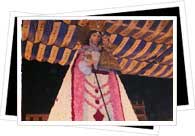 Virgen de los Desamparados
Virgen de los Desamparados
(Our Lady of the Forsaken)
When: 2nd Sunday of May
Festival Description: The commemoration of Valencia's second patron saint, the Virgen de los Desamparados, begins the evening before with a concert in the Plaza de la Virgen featuring the Valencia Municipal Band, traditional folk music and dance, and - in true Valencia fashion - a fireworks display. The actual day of the festival opens at 5:00am with an open-air mass called La Misa Descuberta. At 10:30am, the sculpted image of the saint is carried from her church by her followers across the Plaza de la Virgen and into the Cathedral in a tradition known as "El Traslado" (the Transfer). Later on, after a "Mascletà" (a round of firecrackers that lasts for over five minutes), a full-out procession passes through the city in which the virgin is brought out into the old town and greeted by hoards of faithful followers and showers of flower petals.
Corpus Christi
(Corpus Christi)
When: June 18
Festival Description: Dating back to the procession in 1355, when the Eucharist was accompanied by city authorities and clergymen throughout the city, today the festival of the Corpus Christi bursts with activities of both a religious and a folkloric nature. Two processions wind through the streets, both of which are welcomed by the bells of the Cathedral's tower, the Miguelete.
The first, more of a festive parade than a procession, features folk-dance groups, street pipers, costumed giants and "La Moma," a character who represents the virtue of having overcome the seven deadly sins. The second procession is more of what early religious leaders had in mind; traditional carriages bearing Biblical scenes accompany the Eucharist- and its enormous jewel-encrusted tabernacle- as on-lookers shower the procession in flower petals. Other activities include the performances known as the Misteris (Mysteries of Christ), a series of Eucharistic plays based on 15th and 16th century writings and performed in the Valencian language.
Noche de San Juan
(Night of Saint Juan)
When: Night of June 23
Festival Description: Also known as the Night of the Witches, an aura of magic envelops Valencia during this national holiday celebrating both San Juan and the coming of summer. Valencianos gravitate to the city's beaches, Malvarrosa and Arenal, which are lined with small bonfires and hoards of people. Along with music, dancing, open-air fairs and the ever-present fireworks displays, tradition has it that if you wash your feet in the water and jump over the small bonfires your wishes will come true.
Feria de Julio
(July Fair)
When:
Festival Description: Click on the link to learn more about Feria de Valencia!
La Tomatina
When: August 29
Festival Description: With traditions like the famous Running of the Bulls in Pamplona and Madrid's Entierro de la Sardina, for which fancy costume-clad people attend the burial of a sardine, Spain has garnered quite a reputation for its quirky festivals. La Tomatina, which takes place in the otherwise quiet village of Buñol, is definitely right up there- it might even take the cake!
The normal population of 9,000 quite nearly quadruples for what is essentially a full-out tomato war that literally paints the town red. It's every man for himself as 125,000 kilograms of ripe tomatoes are flung, slung and hurled through the air for two straight hours. The tradition began in 1945, perhaps the result of a restaurant food fight in which the locals got a bit carried away. Realizing how much fun it was, the event was repeated the following year... and the year after that... and the year after that... until it evolved into the phenomenon it is today. Note: avoid wearing your Sunday finest!
Festival Internacional de Pirotecnia
(International Festival of Pyrotechnics)
When: October 6-8
Festival Description: The midnight sky lights up time and again as deafening cracks, pops and fizzles electrify the air during this Valencian festival. A group of Europe's most renowned fireworks companies congregate here in Europe's pyrotechnic paradise for a huge, out-of-this-world fireworks festival.
Día de la Comunidad Valenciana
(Day of the Valencian Community)
When: October 9
Festival Description: Ushered in by the previous night's fiery conclusion to the Festival Internacional de Pirotecnia, the Day of the Valencian Community is a commemoration of king Jaime I's victory in 1238 over the occupying Moorish forces. The celebration was first held to mark the 100 year anniversary of the defeat in 1338 and featured an elaborate parade in which even the king at the time Pedro III participated. Valencia city officials decided to continue the parade each year, though not quite to the original's height of extravagance.
Aside from the parade, featuring Moorish and Christian costumed "troops," the celebration coincides with the Day of Saint Dionisio, the Valencian verison of Valentine's Day, on which men give their girlfriends or wives gifts of marzipan sweets wrapped in a traditional neckerchief.
Nochebuena / Navidad
(Christmas Eve / Christmas)
When: December 24-25
Festival Description: Decorative lights, nativity scenes - especially the elaborate one set up alongside a soaring Christmas tree in the Plaza del Ayuntamiento), Christmas markets and holiday caroles set the festive mood in Valencia for Nochebuena and Navidad. Nochebuena, or Christmas Eve, is one of the most important - and usually one of the biggest- dinners of the year. Families, both immediate and extended, gather together for a night of eating, drinking, chatting and general holiday cheer.
On Navidad, or Christmas Day, itself, families spend a good chunk of the day recovering from the previous night and gearing up for the mid-day Christmas meal. Children may open a couple of presents dropped off by Santa Claus, but the day that they're anxiously awaiting is January 6: Three Kings Day. In Valencia's Turia riverbed park there is also a Feria de Navidad (Christmas Fair) featuring knick-knacks, rides and fun activities for children and families.
Nochevieja
(New Years Eve)
When: December 31-January 1
Festival Description: Ringing in the new year in Valencia starts off as a family celebration full of copious amounts of eating, drinking and conversation. Then you can either flip on the television and watch the live footage of the countdown in Madrid's Puerta del Sol or head to Valencia's open plazas- particularly those that have a clock- with hoards of party-goers armed with their "good luck grapes." When the clock strikes midnight, you have to pop a grape in your mouth with each of the 12 chimes of the clock; if you complete the feat, you're looking at a year of good luck. Plus, it's a pretty entertaining spectacle!
The night, however, is far from over. Late-night celebrations take over bars and discotecas as huge parties are held; normally you pay a fixed price to get in, which gets you open-bar and a night of fun and entertainment.
